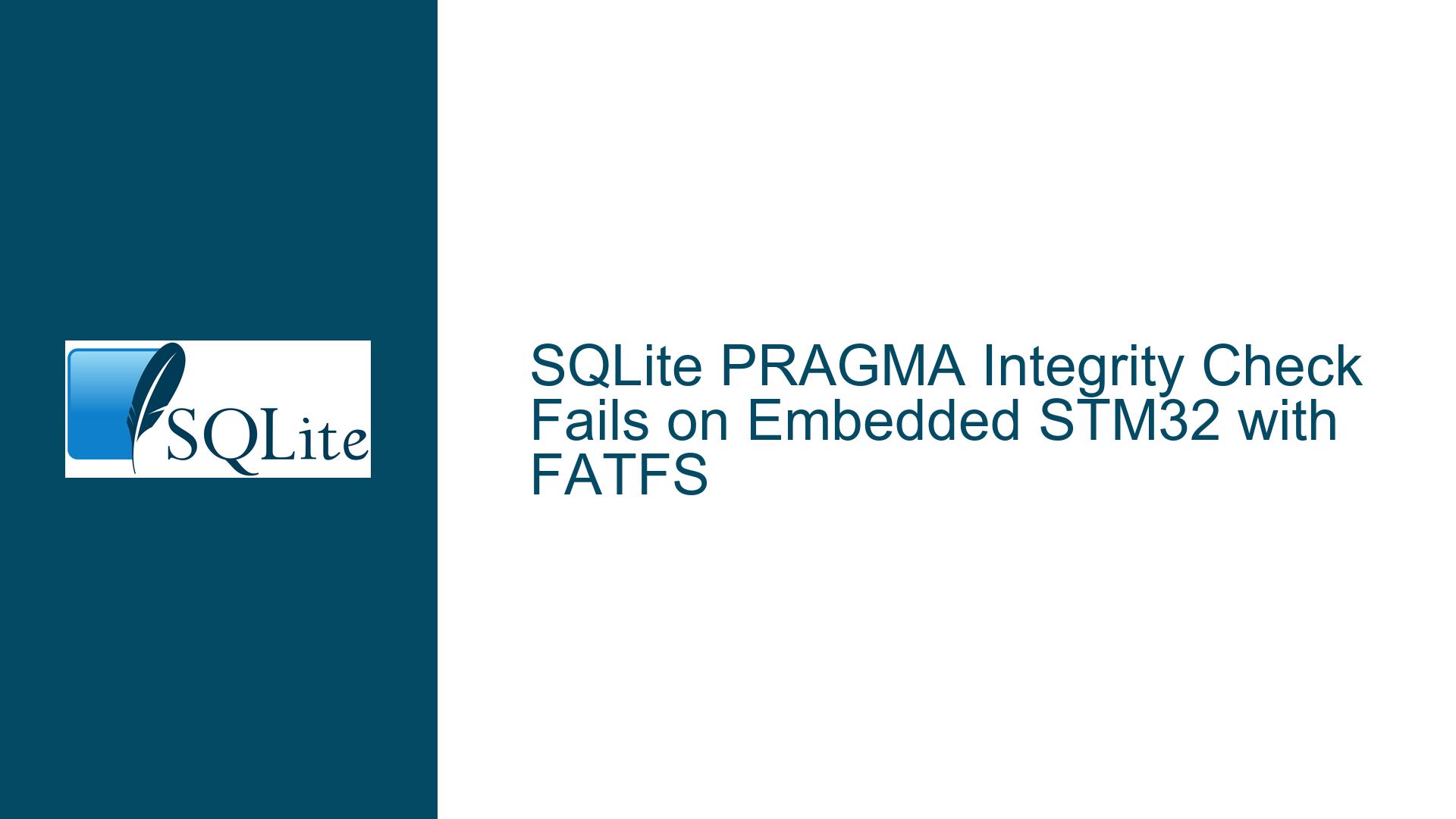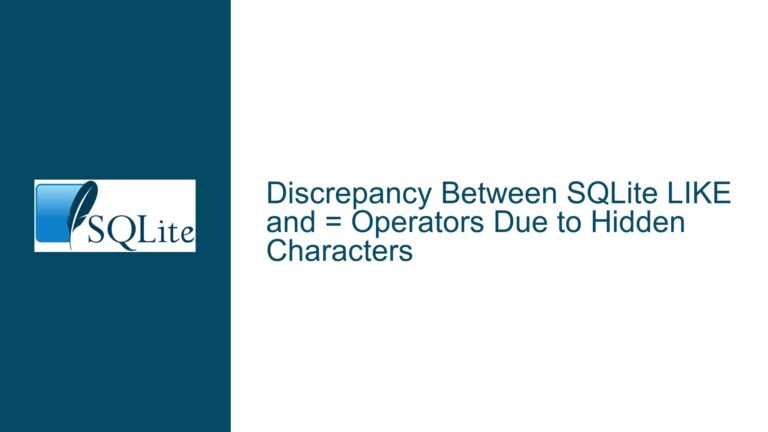SQLite PRAGMA Integrity Check Fails on Embedded STM32 with FATFS
Understanding the PRAGMA Integrity Check Behavior on Embedded Systems
The PRAGMA integrity_check command in SQLite is a critical tool for verifying the structural integrity of a database. When executed, it scans the database for inconsistencies, corruption, or other issues that could compromise data reliability. On most platforms, this command returns at least one row of output, even if the database is healthy, with the value "ok" indicating no issues. However, in the context of an embedded system like the STM32H743 microcontroller running FATFS on an eMMC storage device, the behavior of this command can deviate from expectations. Specifically, the command may return SQLITE_DONE without any rows, even when the database is healthy, or exhibit inconsistent behavior across different database schemas (e.g., main vs. temp).
This issue is particularly perplexing because the same database, when tested on a Linux system, behaves as expected. This discrepancy suggests that the problem is not with the database itself but rather with the environment in which SQLite is running. The embedded system’s limited resources, custom VFS implementation, and potential memory constraints could all contribute to this anomalous behavior. Understanding the root cause requires a deep dive into the SQLite internals, the specifics of the embedded environment, and the interaction between SQLite and the underlying storage system.
Potential Causes of Integrity Check Failures on Embedded Systems
Several factors could explain why the PRAGMA integrity_check command fails to return expected results on an embedded system like the STM32H743. The first and most obvious possibility is memory constraints. SQLite’s integrity check is a resource-intensive operation that requires significant memory to traverse the database structure, verify indexes, and validate data consistency. On a system with limited RAM, such as the STM32H743, an out-of-memory (OOM) condition could cause the check to terminate prematurely, resulting in SQLITE_DONE being returned without any rows.
Another potential cause is the custom VFS implementation. The VFS (Virtual File System) layer in SQLite abstracts the underlying file system, allowing SQLite to operate on different storage mediums. In this case, the VFS is based on FATFS, a file system designed for embedded systems. If the VFS implementation has bugs or does not fully comply with SQLite’s expectations, it could lead to unexpected behavior during the integrity check. For example, improper handling of file pointers, incorrect metadata reporting, or incomplete support for SQLite’s file locking mechanisms could all contribute to the observed issues.
A third possibility is database corruption specific to the embedded environment. While the database appears healthy on a Linux system, it could still contain subtle inconsistencies that only manifest under the constraints of the embedded system. For instance, the eMMC storage device might have bad sectors, or the FATFS driver might introduce errors during read/write operations. These issues could cause the integrity check to fail silently, returning SQLITE_DONE without any diagnostic output.
Finally, the version of SQLite being used (3.31.1) might have bugs or limitations that are exacerbated in an embedded environment. While this version is generally stable, it is possible that certain edge cases or platform-specific issues were not fully addressed. Upgrading to a newer version of SQLite could resolve some of these problems, provided that the new version is compatible with the embedded system’s constraints.
Diagnosing and Resolving Integrity Check Issues on Embedded Systems
To diagnose and resolve the integrity check issues on the STM32H743, a systematic approach is required. The first step is to verify the memory usage during the integrity check. This can be done by instrumenting the code to monitor memory allocation and deallocation. If an OOM condition is detected, the system’s memory configuration should be reviewed. Increasing the heap size, optimizing memory usage, or reducing the complexity of the database schema could alleviate memory pressure and allow the integrity check to complete successfully.
Next, the custom VFS implementation should be thoroughly tested. This involves verifying that all required VFS methods are correctly implemented and that they behave as expected under various conditions. Special attention should be paid to file locking, as SQLite relies on proper locking to ensure data consistency. If the VFS implementation is found to be deficient, it should be updated or replaced with a more robust implementation.
The integrity of the database itself should also be verified. This can be done by exporting the database from the embedded system and running the integrity check on a more capable system, such as a Linux PC. If the database is found to be corrupt, the root cause of the corruption should be investigated. This might involve checking the eMMC storage device for bad sectors, reviewing the FATFS driver for bugs, or examining the application code for improper database operations.
If the above steps do not resolve the issue, upgrading to a newer version of SQLite should be considered. The latest version of SQLite includes numerous bug fixes and performance improvements that could address the observed issues. However, care must be taken to ensure that the new version is compatible with the embedded system’s constraints and that any necessary modifications to the VFS implementation are made.
In conclusion, the failure of the PRAGMA integrity_check command on an embedded system like the STM32H743 is a complex issue that can stem from multiple causes. By systematically diagnosing and addressing each potential cause, it is possible to restore the expected behavior of the integrity check and ensure the reliability of the database. This process requires a deep understanding of SQLite’s internals, the embedded system’s constraints, and the interaction between the two. With careful analysis and targeted fixes, the integrity check can be made to work reliably, providing confidence in the database’s structural integrity.






